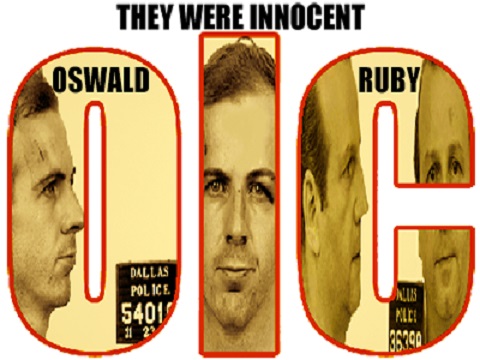According to Michael Griffith, who is a well-respected JFK researcher who footnotes everything, the Dallas Police found partial prints on the magazine housing of the rifle, which is part of the trigger guard, which could not be matched to Oswald. Then, on the 23rd, the FBI's Sebatian Latona found the prints to be utterly worthless. It wasn't until 1993 that two experts studied, not the prints but photos of the prints, and declared that they were Oswald's.
But, the dubiousness of this is screaming out loud. Michael Griffith:
In the 1973 trial of H. Rap Brown, a police expert with 18 years experience with the New York Police Crime Lab, Sgt. William Torpey, testified that during his career he had examined over "500 firearms for fingerprints and had found only one identifiable print" (O'Hara 778). Torpey continued,
Any prints found on boxes are suspect not just because Oswald worked there but because someone could have seen him handle a box and then, after he (Oswald) was gone, that man could have moved that box into the sniper's nest. The boxes were all generic, so that would have been easy and fool-proof.
Then there was the palm print which wasn't found until after Oswald was dead, and Oswald's wake was teeming with FBI agents.
But, Tanenbaum made no definitive statement to the jury about this. He just alluded to it. He wasn't even that interested in it. He preferred to talk about the ballistics and Kennedy's x-rays and the bullet wounds, and the fact that Connolly held on to his hat. Yeah, we know, Tanenbaum, but what the hell does it have to do with vindicating Oswald?
Tanenbaum made an opening statement that lasted for an hour and a half, and never once did he state, "Lee Harvey Oswald was innocent." For Pete's sake, it would have been the first words out of my mouth. Tanenbaum rarely brought up the name Oswald at all. He had only one goal today: to dispute the Single Bullet Theory to establish multiple gunmen, and therefore, conspiracy. And really, he was stepping on Oswald, conveying to the jury, that not even he, his lawyer, wants to talk about him.
Imagine if Oswald was alive and there and listening to all that. What would he be thinking? "I thought you were supposed to be MY lawyer."
And while Tanenbaum was trashing Oswald, the judge was trashing him, asking him over and over to wrap it up. Tanenbaum did point out that Pappas, the prosecutor, took an hour and a half, and the judge wasn't harassing him. So, why the double standard? Well, for one thing, Tanenbaum was much more boring. He was so dull, he practically put the jury to sleep. There was nothing grabbing about anything he said or about his overall style. He never seemed to be talking to the jury. No, he was talking to the camera, to the country, and to posterity. Don't you think it's a good idea if the lawyer talks directly to the jury? Tell Tanenbaum.

No comments:
Post a Comment
Note: Only a member of this blog may post a comment.